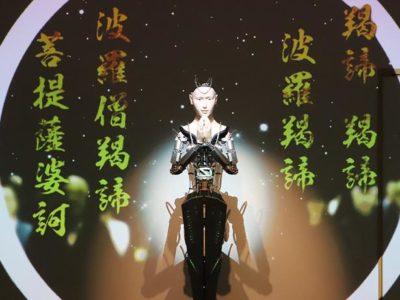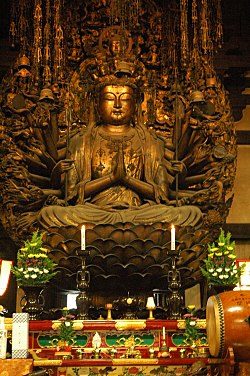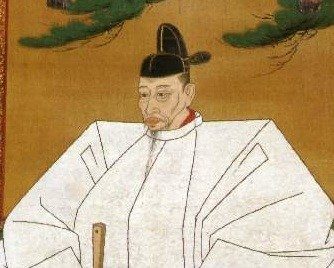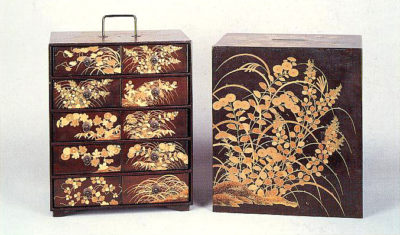Hello everyone how are you? Today’s topic is the World First Robotic Deity,
” Android Kannon “.
The special exhibition of the “Android” (a robot with a human appearance) “Kannon” (Buddhist deity of mercy) started to exbit from March 8 to May 6 (2019) at Kodaiji temple in Kyoto.
Contents
What’s Android Kannon?
The android, named Mindar, is programmed to deliver a “sermon” from the Heart Sutras in Japanese. The translated versions of English and Chinese are projected on a screen.
Mindar, which has a camera installed in its left eye, stands 195 centimeters (6.4 feet) tall, including the base, and weighs 60 kilograms (132lb).

It can move its head, as well as arms and torso, which have see-through mechanical parts.
The 100 million yen ($909,090) project to build the android was a collaboration between the zen temple and Hiroshi Ishiguro, professor of intelligent robotics at Osaka University.
The temple asked Ishiguro and his team to develop an android that can preach Buddhist teachings in an easily understood manner to help give peace of mind to troubled people.
Before the exhibition, the Android Kannon was unveiled to the news media on Feb. 23 at Kodaiji temple before it starts preaching to the public in March.
“Buddhism saw a phenomenal spread in the world with the emergence of Buddhist images,” said Tensho Goto, a priest at the temple in Kyoto’s Higashiyama Ward.
“We are hoping that the Android Kannon will help Buddhist teachings reach the hearts of people today.”
The Kannon deity transforms itself into various forms to help people.
“This time, Kannon changed into an android,” according to the temple.
What’s Kannon (Goddess of mercy)?
Guanyin or Guan Yin is the most commonly used Chinese translation of the bodhisattva (a person who is able to reach nirvana but delays doing so out of compassion in order to save suffering beings).
In Japanese, Guanyin is pronounced Kannon, occasionally Kan’on, or more formally Kanzeon (the same characters as Guanshiyin); the spelling Kwannon, based on a premodern pronunciation, is sometimes seen.

This rendition was used for an earlier spelling of the well-known camera manufacturer Canon Inc., which was named for Guanyin. When iconography of Kannon depicts her with the Nyoihōju wishing gem she is known as Nyoirin Kannon, which is the Japanese adaptation of the Hindu deity Cintamanicakra.
In English usage, Guanyin refers to the Buddhist bodhisattva associated with compassion and venerated chiefly by followers of Mahayana Buddhist schools as practiced in the sinosphere.
Guanyin also refers to the bodhisattva as adopted by other Eastern religions such as Taoism, where she is revered as an immortal, as well as Chinese folk religions, where the mythical accounts about Guanyin’s origins do not associate with the Avalokiteśvara described in Buddhist sutras.
In English, she is often known as the “Goddess of Mercy” or the Mercy Goddess . The Chinese name Guanyin, is short for Guanshiyin, which means “[The One Who] Perceives the Sounds of the World”.
Some Buddhists believe that when one of their adherents departs from this world, they are placed by Guanyin in the heart of a lotus, and then sent to the western Pure Land of Sukhāvatī.
Guanyin is often referred to as the “most widely beloved Buddhist Divinity” with miraculous powers to assist all those who pray to her, as is said in the Lotus Sutra and Karandavyuha Sutra.
What’s the characteristic of Kodai temple where Android Kannon put in place?

It was established in 1606 by the nun Kōdai-in (often known by the title Kita no Mandokoro), who was the widow of Toyotomi Hideyoshi(the 16th-century warlord who unified Japan) to pray for her late husband. The principal image is a statue of Shaka.

The gardens of Kōdai-ji are a nationally designated Historic Site and Place of Scenic Beauty.

The temple possesses a number of objects designated as Important Cultural Assets. Among these are the Main Gate and the Spirit Hall, noted for its use of maki-e.

The temple is nicknamed the maki-e temple.” It also holds paintings, including one of Hideyoshi, as well as textiles, and a bronze bell with an inscription dating it to 1606.
Here’s a video of Android Kannon (Buddhist deity) in Japanese though, it gives us prayer’s vibes.
And it’s well worth visit there enjoying to hear Android Kannon Mindar relates to the Heart Sutra and see the beautiful garden, Important Cultural Assets etc., while exhiition from March 8 to May 6, but before visiting at Kodaiji temple, reservation is required.
Finally, we have two blogs related to here’s article, one is “Buddhist statures“, and another “Todaiji” to be visited, thanks






